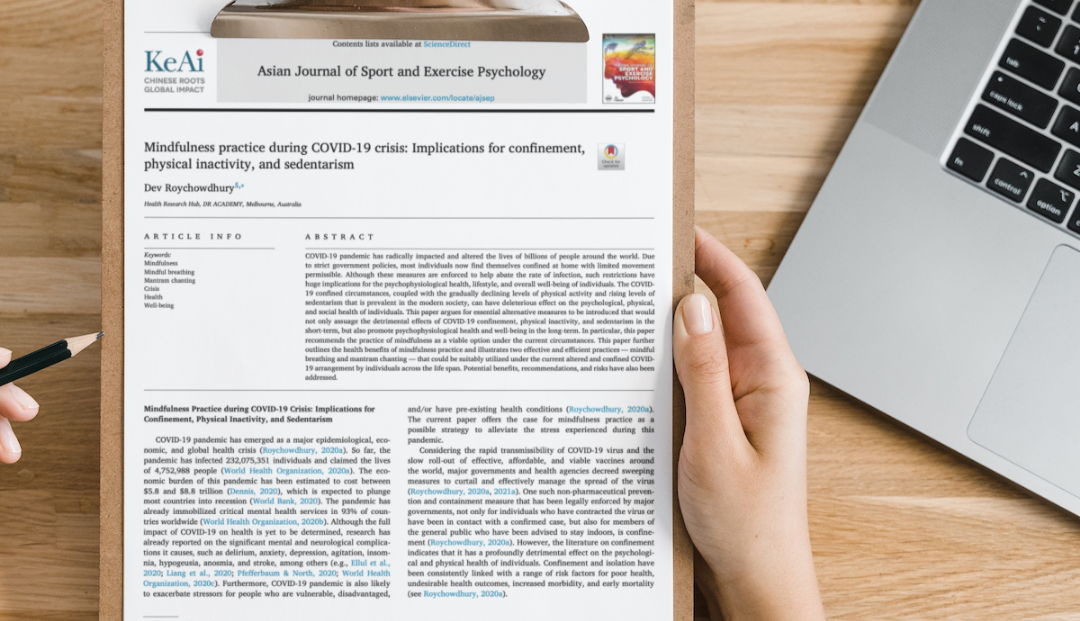If you are a researcher or an editor, you are probably familiar with the term “peer-review”. But what exactly does it mean, and how does it work?
Peer-review is the process of evaluating and improving the quality and validity of a research manuscript by other experts in the same field. It is a crucial part of the academic publishing system, as it ensures that only high-quality and reliable research is disseminated to the scientific community and the public.
Peer-review can take different forms, depending on the journal and the discipline. Some of the most common types of peer-review are:
- Single-blind peer-review: The reviewers know the identity of the authors, but the authors do not know the identity of the reviewers.
- Double-blind peer-review: Neither the reviewers nor the authors know each other’s identity.
- Open peer-review: The identity of both the reviewers and the authors is disclosed, and the peer-review reports are published along with the manuscript.
- Post-publication peer-review: The manuscript is published first, and then it is open to comments and feedback from anyone who reads it.
Each type of peer-review has its own advantages and disadvantages, and there is no consensus on which one is the best or most effective. However, regardless of the type of peer-review, the main goal is to provide constructive and unbiased feedback to the authors, and to help the editors make informed decisions about whether to accept, reject, or request revisions for a manuscript.
Peer-review is not a perfect system, and it faces many challenges and limitations. Some of these include:
- Finding qualified and willing reviewers who can provide timely and thorough feedback
- Ensuring that reviewers are fair and objective, and do not have any conflicts of interest or biases
- Dealing with inconsistent or contradictory reviewer comments
- Managing principles around plagiarism or fraud
- Adapting to the changing needs and expectations of researchers and readers
Despite these challenges, peer-review is still widely regarded as the gold standard for evaluating research quality and credibility. It is also a valuable learning opportunity for researchers and editors, as it helps them improve their writing, critical thinking, and communication skills.
In this article, I will demystify academic peer-review and provide a comprehensive guide for researchers and editors who want to understand and participate in this process. I will cover:
- The peer-review process: How a manuscript goes from submission to publication
- The role of peer-reviewers: What are their responsibilities and expectations, and how can they conduct effective and transparent peer-reviews
- The future of peer-review: What are the current trends and innovations in peer-review, and how can they improve research quality and dissemination
I hope that this article will help you gain a better understanding of academic peer-review, and inspire you to contribute to this vital aspect of research culture. Let’s get started!

The Peer-Review Process
The peer-review process is the journey that a manuscript takes from submission to publication. It involves several steps and actors, and it can vary depending on the journal and the discipline. However, a typical peer-review process looks something like this:
☞ Submission: The authors submit their manuscript to a journal that matches their research topic and scope. They also provide some information about their manuscript, such as the title, abstract, keywords, authors, affiliations, and funding sources. Some journals may also ask the authors to suggest potential reviewers or to exclude certain reviewers who may have a conflict of interest or bias.
☞ Screening: The editor-in-chief or an associate editor screens the manuscript to check if it meets the basic criteria and standards of the journal, such as originality, relevance, quality, and format. If the manuscript passes the screening, it is assigned to a handling editor who is responsible for managing the peer-review process. If the manuscript fails the screening, it is rejected without further review.
☞ Reviewer selection and invitation: The handling editor selects and invites reviewers for the manuscript. The reviewers are usually experts in the same or a related field as the manuscript, and they have no personal or professional relationship with the authors. The reviewers can be suggested by the authors, the editor, or the journal database. The reviewers are asked to accept or decline the invitation within a certain time frame. If they accept, they are given access to the manuscript and a deadline to submit their review. If they decline, the editor invites another reviewer. The number of reviewers required for a manuscript can vary from two to five or more, depending on the journal and the discipline.
☞ Reviewer evaluation: The reviewers read and evaluate the manuscript according to the criteria and standards of the journal, such as novelty, originality, significance, methodology, results, discussion, conclusions, and references. They also check for any errors, inconsistencies, gaps, or flaws in the manuscript. They write a review report that summarizes their main findings and comments, and provide a recommendation for the editor. The recommendation can be one of the following:
- Accept: The manuscript is ready for publication without any changes.
- Minor revisions: The manuscript requires some minor changes or corrections before publication.
- Major revisions: The manuscript requires some major changes or improvements before publication.
- Reject and resubmit: The manuscript has some potential but needs substantial revisions and another round of review before publication.
- Reject: The manuscript is not suitable for publication in this journal.
☞ Editor decision and communication: The handling editor collects and evaluates the reviewer reports and makes a decision based on their feedback and recommendation. The decision can be one of the following:
- Accept: The manuscript is accepted for publication without any changes.
- Minor revisions: The manuscript is accepted for publication subject to some minor changes or corrections.
- Major revisions: The manuscript is conditionally accepted for publication subject to some major changes or improvements.
- Reject and resubmit: The manuscript is rejected but can be resubmitted after substantial revisions and another round of review.
- Reject: The manuscript is rejected and cannot be resubmitted to this journal.
The editor communicates the decision and the reviewer reports to the authors via email or an online system. The authors are usually given a deadline to respond to the decision and to submit their revised manuscript if required.
☞ Revision and resubmission: If the manuscript requires revisions, the authors revise their manuscript according to the reviewer comments and suggestions. They also write a response letter that explains how they have addressed each comment and what changes they have made in their manuscript. They submit their revised manuscript and their response letter to the editor via email or an online system.
☞ Re-review and final decision: If the manuscript requires another round of review, the editor sends it back to the same or new reviewers for re-evaluation. The reviewers check if the authors have adequately revised their manuscript and if there are any remaining issues or concerns. They write a new review report that summarizes their findings and comments, and provide a new recommendation for the editor. The editor collects and evaluates the new reviewer reports and makes a final decision based on their feedback and recommendation. The final decision can be one of the following:
- Accept: The manuscript is accepted for publication without any further changes.
- Minor revisions: The manuscript is accepted for publication subject to some minor changes or corrections.
- Reject: The manuscript is rejected and cannot be resubmitted to this journal.
The editor communicates the final decision and the new reviewer reports to the authors via email or an online system.
☞ Publication: If the manuscript is accepted for publication, it goes through some final steps before it is published online or in print. These steps may include copyediting, proofreading, formatting, and typesetting. The authors may also be asked to approve the final version of their manuscript and to sign a publication agreement or a license. Once these steps are completed, the manuscript is published and becomes part of the scientific literature.
This is a general overview of the peer-review process, but it may vary depending on the journal and the discipline. For example, some journals may have different types of peer-review, such as rapid review, cascading review, collaborative review, etc. Some journals may also have different stages or phases of peer-review, such as initial review, technical review, editorial review, etc. Furthermore, some journals may also have different policies or practices for peer-review, such as transparency, anonymity, recognition, etc.
Therefore, it is important for researchers and editors to familiarize themselves with the specific peer-review process and guidelines of the journal they are submitting to and/or working for. This will help them avoid any confusion or misunderstanding, and ensure a smooth and efficient peer-review process.
The Role of Peer-Reviewers
Peer-reviewers are the backbone of the peer-review process. They are the ones who provide the expert feedback and advice that help authors improve their manuscripts and editors make their decisions. Peer-reviewers are usually researchers who have published in the same or a related field as the manuscript they are reviewing, and they have no personal or professional relationship with the authors. Peer-reviewers are usually invited by editors to review a manuscript, but they can also volunteer or register themselves as potential reviewers for a journal.
Peer-reviewers have several responsibilities and expectations when they agree to review a manuscript. Some of these are:
- To accept or decline the invitation within a reasonable time frame, and to inform the editor of any conflicts of interest or biases that may affect their review.
- To read and evaluate the manuscript carefully and thoroughly, according to the criteria and standards of the journal, such as novelty, significance, methodology, results, discussion, conclusions, and references.
- To write a review report that summarizes their main findings and comments, and provide a recommendation for the editor. The review report should be clear, concise, constructive, and respectful. It should highlight the strengths and weaknesses of the manuscript, and suggest ways to improve it. It should also point out any errors, inconsistencies, gaps, or flaws in the manuscript, and provide evidence or references to support their claims.
- To submit their review report within the deadline given by the editor, or to request an extension if needed. They should also be prepared to revise their review report if requested by the editor or the authors.
- To respect the confidentiality and anonymity of the peer-review process, and not to share or discuss the manuscript or their review report with anyone else, unless authorized by the editor.
Peer-reviewers also bear additional responsibilities, which include the following:
- To be fair and objective, and not to let any personal or professional preferences, opinions, beliefs, or biases influence their review. They should also not have any conflicts of interest or competing interests with the authors or the manuscript.
- To be honest and accurate, and not to make any false or misleading statements or claims in their review. They should also not plagiarize or copy any content from the manuscript or other sources for their own review.
- To be respectful and courteous, and not to use any offensive, abusive, or inappropriate language or tone in their review. They should also not make any personal attacks or criticisms against the authors or their work.
- To be constructive and helpful, and not to be overly negative or harsh in their review. They should also not accept or reject a manuscript without providing sufficient reasons or feedback.
Peer-reviewers can benefit from conducting peer-reviews in several ways. Some of these are:
- To learn from other researchers’ work and gain new insights and perspectives on their own research field.
- To improve their own writing, critical thinking, and communication skills by providing feedback and suggestions to other researchers.
- To enhance their reputation and credibility as experts in their research field by contributing to the quality and validity of research.
- To network and collaborate with other researchers and editors in their research field by establishing professional relationships and contacts.
Peer-reviewers can also face some challenges and dilemmas when they manage peer-reviews. Some of these are:
- Finding enough time and motivation to complete peer-reviews among their other academic duties and responsibilities.
- Dealing with complex or controversial topics or issues that may require more expertise or knowledge than they have.
- Handling conflicting or contradictory reviewer comments that may confuse or frustrate them.
- Resolving issues such as plagiarism or fraud that they may encounter in some manuscripts.
Peer-reviewers can overcome these challenges and dilemmas by following some tips and resources for conducting effective and ethical peer-reviews. Some of these are:
- To prioritize and manage their time wisely by accepting only those invitations that match their expertise and availability, and by setting realistic deadlines and goals for themselves.
- To seek additional information or guidance from other sources such as books, articles, websites, etc., that can help them understand and evaluate the manuscript better.
- To communicate clearly and openly with the editor if they have any questions, concerns, or issues regarding the manuscript or their review report.
Peer-reviewers play a vital role in ensuring that only high-quality and reliable research is published in academic journals. They provide valuable feedback and advice to authors and editors that help them improve their manuscripts and make informed decisions. Peer-reviewers also benefit from completing peer-reviews by learning from other researchers’ work, improving their own skills, expanding their expertise, and networking with other professionals. Peer-reviewers also have to follow some responsibilities and expectations when completing peer-reviews. Peer-reviewers also have to deal with some challenges and dilemmas that may arise during the peer-review process. Peer-reviewers can overcome these challenges and dilemmas by following helpful tips and resources that can help them conclude effective and transparent peer-reviews.
The Future of Peer-Review
Peer-review is not a static or fixed system, but a dynamic and evolving one. It has to adapt to the changing needs and expectations of researchers and readers, as well as to the technological and social developments that affect research and publishing.
In recent years, there have been many trends and innovations in peer-review that aim to address some of the challenges and limitations of the traditional peer-review system, and to improve the quality and dissemination of research. Some of these trends and innovations are:
- Preprints: Preprints are versions of manuscripts that are posted online before they undergo peer-review or publication in a journal. They allow researchers to share their work faster and more widely, and to receive feedback and comments from other researchers or readers. Preprints can also help researchers establish priority and credit for their work, and avoid duplication or wastage of resources. Preprints can also facilitate peer-review by providing more visibility and accessibility to manuscripts, and by allowing reviewers to comment or review preprints before or after they are submitted to a journal. However, preprints also pose some challenges and risks, such as:
- Quality: Preprints may not have the same quality and reliability as peer-reviewed manuscripts, as they may contain errors, inconsistencies, gaps, or flaws that have not been detected or corrected by reviewers or editors.
- Credibility: Preprints may not have the same credibility and recognition as peer-reviewed manuscripts, as they may not meet the criteria and standards of journals or funding agencies.
- Confusion: Preprints may cause confusion or misunderstanding among researchers or readers, as they may not clearly indicate their status or version, or they may conflict or contradict with peer-reviewed manuscripts.
- Post-publication review: Post-publication review is the process of evaluating and commenting on a manuscript after it has been published in a journal. It allows researchers or readers to provide feedback and suggestions to the authors or editors, and to discuss or debate the merits or implications of the manuscript. Post-publication review can also help improve the quality and validity of research by identifying and correcting any errors, inconsistencies, gaps, or flaws that may have been missed or overlooked during peer-review or publication. Post-publication review can also facilitate peer-review by providing more transparency and accountability to the peer-review process, and by allowing reviewers to revise or update their review reports based on new evidence or information. However, post-publication review also poses some challenges and risks, such as:
- Participation: Post-publication review may not have enough participation or engagement from researchers or readers, as they may not have enough time, motivation, or incentive to comment or review published manuscripts.
- Quality: Post-publication review may not have the same quality and rigor as pre-publication review, as it may not follow the same criteria and standards of journals or editors.
- Impact: Post-publication review may not have enough impact or influence on research or publishing, as it may not affect the status or outcome of published manuscripts.
- Open peer-review: Open peer-review is the process of disclosing the identity of both the reviewers and the authors, and publishing the peer-review reports along with the manuscript. It aims to increase the transparency and accountability of the peer-review process, and to reduce the bias or conflict of interest that may affect reviewer feedback or editor decisions. Open peer-review can also help improve the quality and validity of research by providing more constructive and respectful feedback to authors, and by allowing reviewers to receive credit and recognition for their work. Open peer-review can also facilitate peer-review by providing more visibility and accessibility to manuscripts and reviewer reports, and by allowing researchers or readers to comment or review them before or after publication. However, open peer-review also poses some challenges and risks, such as:
- Anonymity: Open peer-review may compromise the anonymity of reviewers or authors, which may affect their privacy or security. It may also affect their feedback or decisions, as they may be influenced by social pressure or expectations.
- Diversity: Open peer-review may reduce the diversity of reviewers or authors, as they may be reluctant or discouraged to participate in open peer-review due to fear of criticism or retaliation.
- Quality: Open peer-review may affect the quality of reviewer feedback or editor decisions, as they may be less honest or rigorous in their evaluation of manuscripts.
These are some of the current trends and innovations in peer-review that aim to improve research quality and dissemination. They have their own advantages and disadvantages, and there is no consensus on which one is the best or most effective. However, they all share a common goal: to make peer-review more transparent, efficient, collaborative, and inclusive.
Peer-review is an essential part of research culture that helps advance knowledge and innovation. It is also a dynamic and evolving system that has to adapt to the changing needs and expectations of researchers and readers. Therefore, it is important for researchers and editors to be aware of the current trends and innovations in peer-review, and to participate in them as authors, reviewers, or editors. By doing so, they can contribute to improving peer-review in the future, and to ensuring that only high-quality and reliable research is published and disseminated.
Conclusion
In this article, I have demystified academic peer-review and provided a comprehensive guide for researchers and editors who want to understand and participate in this process. I have covered:
- The peer-review process: How a manuscript goes from submission to publication
- The role of peer-reviewers: What are their responsibilities and expectations, and how can they conduct effective and transparent peer-reviews
- The future of peer-review: What are the current trends and innovations in peer-review, and how can they improve research quality and dissemination
I hope that this article has helped you gain a better understanding of academic peer-review, and inspired you to contribute to this vital aspect of research culture. Peer-review is not only a process, but also a practice that requires skills, knowledge, and perseverance. It is also a collaborative and collective effort that involves researchers, editors, reviewers, and readers. By participating in peer-review as authors, reviewers, or editors, you can help improve the quality and validity of research, and advance knowledge and innovation in your field.
If you have any questions, comments, or feedback, please feel free to comment below. If you need assistance with your manuscript, I'd be happy to help. Get in touch today.
Happy reviewing! 😊














Discussion